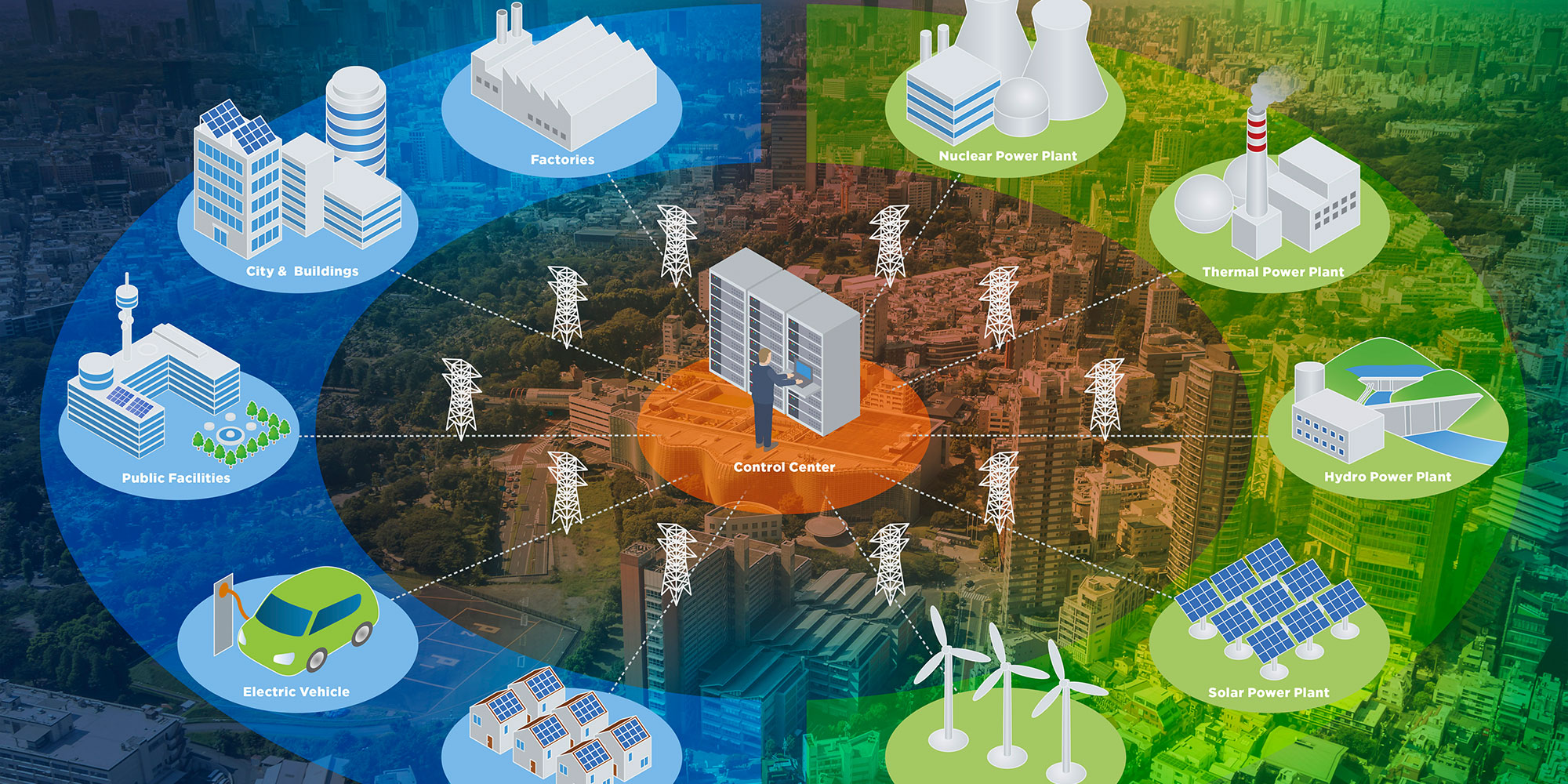Can Virtual Power Plants Spark Asia’s Green Energy Revolution?
|
As the world demands a more renewable-friendly environment, the Asia Pacific region continues to take responsibility for clean energy generation. Underpinned by this commitment, the region has emerged as the largest renewable energy market. However, on the flip side, renewable energy utilisation remains low due to a lack of reliability in renewable energy generation. |
|
Virtual power plants (VPPs) support generation reliability. Even though the Asia Pacific region is relatively small in VPP capacity compared with North America and Europe (as of 2016), the region is expected to record the fastest growth over 2017–22E, at a CAGR of 65.7%. Although China, Japan, and Australia are leading pioneers of VPPs in the region, we see higher potential in other developing Asian markets such as India and in ASEAN countries such as the Philippines and Malaysia. |
|
Growth in VPPs has opened a more economically attractive avenue for battery manufacturers. They are able to carry out large-scale battery installations that should allow them to recover from losses from the rapid decline in battery prices. However, the growth expected in the Asia Pacific region over the next five years is still insufficient for the region to host the largest VPP market by 2022E. A lack of funding, a relatively underpenetrated renewable energy market, and an inadequate transmission and distribution network are some of the obstacles against that achievement. Nevertheless, these challenges have been slowly receding, and eventually the Asia Pacific region should become a lucrative VPP market for investors and a hub for clean-energy smart tech start-ups. |
|
Global Power Market in Paradigm Shift |
|
Power markets around the world are shifting from centralised electricity generation in large fossil-fuel power plants to decentralised generation in small facilities (e.g. small-scale wind farms and residential solar photovoltaics [PV]). decentralised generation involves a mix of renewable energy sources (RES), and is also referred to as distributed energy resource (DER) generation. The need for reliability in electricity generation is growing in line with increasing DER adoption. This has created a new opportunity for applications of the Fourth Industrial Revolution (4IR), such as virtual power plants (VPPs). A VPP collates power generation, storage, and distribution via software algorithms in order to provide optimal grid solutions. A niche application of this is the microgrid, as its operation is confined within a particular geographic boundary and it can disconnect from the national grid to create a power island (i.e. an off-the-grid system). |
|
Applications of decentralised electricity distribution systems will significantly redefine the way electric utilities operate as providers of electricity to entities that offer grid-based services, while maintaining grid reliability. According to Navigant (a global consulting firm), the role of utilities in the future will be to provide ‘energy as a service’ (EaaS).The following infographics show the structure of a VPP, the different technologies enabled in these systems, and the various functions they provide compared with the conventional market mechanism. |
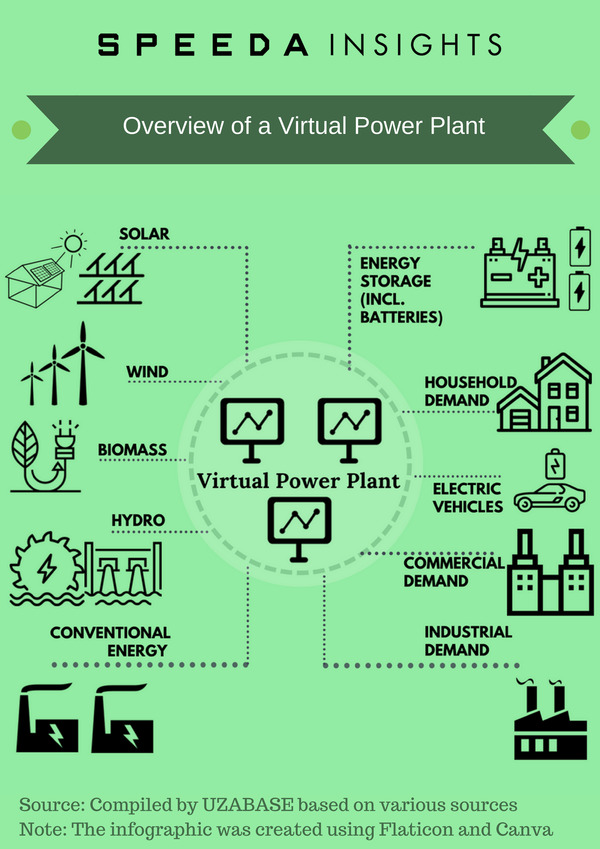 |
 |
 |
|
North America Dominates Despite APAC’s More Urgent Need for VPPs |
|
The global VPP market remains small, with vendor revenue totalling USD 1.5 billion in 2016, as per the latest data (a mere 1.5% of the global advanced electricity delivery and management market). North America was the pioneer market for these systems, accounting for the largest share (about 53%) of VPP capacity globally as of 2017. This was due to a strong focus on energy saving by the governments of countries such as the USA and Canada. The Asia Pacific region (APAC) was a relatively small market, accounting for only about 10% of global capacity in 2017, although the region hosted the second-largest microgrid capacity (about 39%) in the world. This was a result of APAC’s high incidence of unelectrified areas that remain difficult to reach from the main grid. Therefore, microgrids feature heavily in off-grid residential solutions that power these areas, in contrast to North America, where microgrids are used mostly by large industrial users for stable power supplies. |
|
APAC Holds Only One-Tenth of VPP Capacity Despite Holding a Large Share of Microgrid Capacity, 2017 |
 |
|
Source: Navigant Consulting |
|
Our analysis first looks at the need for VPPs in each region and thereafter at the potential for VPP deployment in key selected markets. The need for VPPs varies by region based on the purpose of adoption, and is highlighted in the infographic below. Even though APAC shows low deployment of VPPs, the region has a strong need for them due to its high carbon emissions, renewable energy installations, and considerably inadequate electrification. VPPs could support growth in rural electrification, as they are expected to provide a low-cost power supply, making it easier to set up. According to the International Energy Agency, decentralised systems will be the main method of electrification in South Asia by 2030E. Based on industry experts’ current cost-benefit assessments, the proportionate saving in energy and cost (tariff and power bill) is greater than the proportionate capacity addition by VPPs. Moreover, due to the fact that renewable energy utilisation is low in the region, VPPs will enable this to be improved through more reliability on renewable energy generation. |
|
APAC Hosts the Largest Renewable Energy Market, 2016 |
 |
|
Source: BP Statistical Review of World Energy 2017; International Renewable Energy Agency (IRENA) |
|
Note: Latest data |
 |
|
Source: Global Carbon Atlas |
|
Note: Latest data |
 |
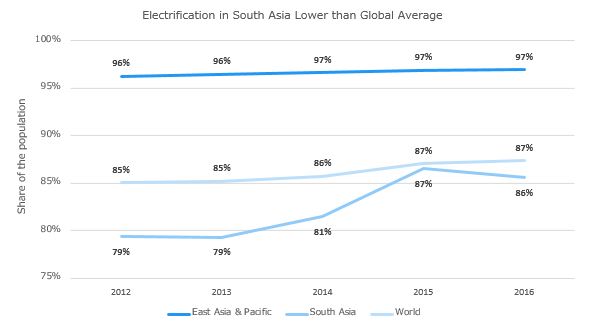 |
|
Source: World BankNote: Latest data |
|
VPP Capacity Creates Significant Cost Savings |
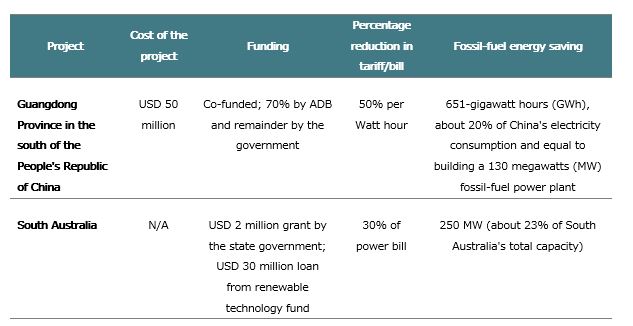 |
|
Source: Compiled by UZABASE based on various materials |
|
Note: Based on cost/benefit assessments by funding agencies such as ADB |
|
APAC Expected to Register Rapid Growth Over 2017–22E; Japan, Australia, and China Pioneer VPP Technology in the Region |
|
According to industry experts, APAC’s VPP capacity is expected to grow at a CAGR of 65.7% over 2017–22E to 14.8 gigawatts (GW), which is well above the global CAGR (52.2%) and above Europe’s (49.3%) and North America’s (48.4%) over the same period. Smart-city initiatives developed by the governments in the region are the main reason underpinning this growth. |
|
The early adopters of these technologies in APAC are Japan, Australia, and China. All three of these countries can be classified as VPP pioneers in the region, driven by their clear vision of smart cities. Meanwhile, India holds high potential, given the high priority the country assigns to achieving 24/7 universal electrification and its renewable energy targets by 2025E. Even though pilot projects could start closer to this period, considering the magnitude of the smart-city plan and the progress of implementation so far, India should receive VPPs closer to 2025E. |
|
ASEAN countries are also long-term potential landmarks in the APAC VPP market. As of today, none of the countries, except Singapore, have active plans for grid modernisation. Even though most of them have drafted smart-city plans, there is no clear focus on decentralised grids. As a result, they face a lack of funding. However, there are opportunities for private equity investors in liberalised power markets such as Cambodia, Myanmar, the Philippines, and Malaysia. Of these countries, Cambodia and Myanmar have a strong need for grid modernisation. Firstly, they are the fastest-growing nations after India. Secondly, a significant percentage of their populations lacked access to power as of 2016 (Cambodia: 50.2%; Myanmar: 43.0%). Thirdly, they showed strong potential for digital grids due to the high share of DER in their power generation, compared with regional peers’. Due to this very reason, we consider these countries as attractive for private equity investors. Large companies such as GE have been active in the Cambodian power sector since 2014. In 2017, GE announced plans to sign an MoU to innovate new grid technologies that could resolve the challenges in Cambodia’s power-sector, lack of rural electrification, high transmission losses, and frequent power outages. |
|
Japan, China, and Australia the VPP Pioneers in APAC |
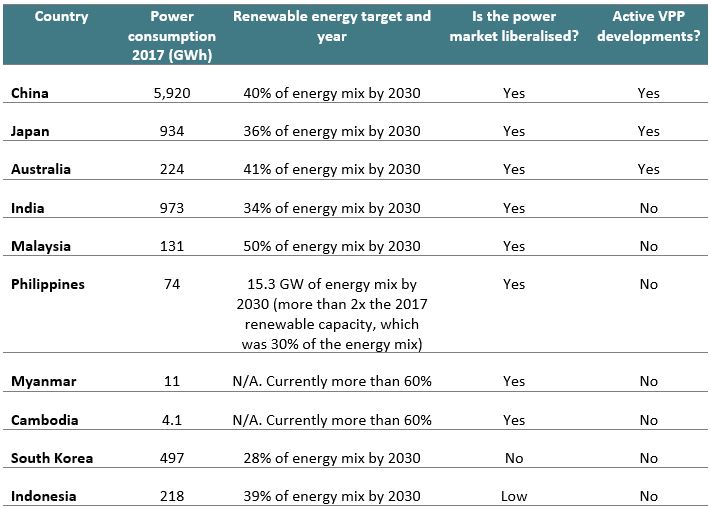 |
|
Source: Created by UZABASE based on various materials |
|
Note: Power markets are not fully privatised |
 |
|
Battery Companies Take Lead in VPP Deployments in APAC |
|
The key investors in the VPP market in APAC are battery manufacturing companies. On the one hand, this is because more than 90% of the investment required in VPPs will be in battery storage, according to industry experts. On the other hand, large-scale battery installation, as required by VPPs, is more financially feasible for battery manufacturers who are currently experiencing losses due to continuously declining battery prices. Battery manufacturers have therefore focused strongly on improving battery capacity and density. The latest project of this nature in this industry was carried out by Tesla; it installed a 100 MW battery set in less than 100 days at the Hornsdale windfarm in South Australia. According to industry sources, its storage can power up a maximum of 30,000 houses for an hour. |
|
Large chemical companies such as LG Electronics have ventured into all three investment segments in order to provide a one-stop solution for upcoming VPP projects. Moreover, most of the active participants in the industry are battery storage manufacturers. There are also a number of start-ups in the region that aim to provide energy-efficient solutions in their respective industries. We have identified five start-ups that have gained high recognition for their products. |
|
Leading Companies in VPP Market in APAC |
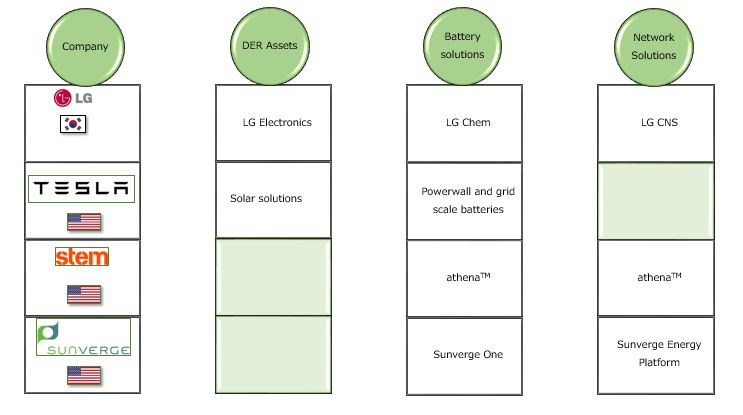 |
|
Source: UZABASE |
|
APAC to Have High Prospects for Existing Start-Ups as Key Challenges Are Resolved |
|
Similar to other tech adoptions in the region, there are a number of challenges against VPP adoption. Hence, APAC’s contribution to global VPP capacity addition (16.9%) over 2016–22E was lower than North America (45.6%) and Europe (33.1%). The following are the three main challenges in the region: |
|
1) Inadequate funding. Only the governments of Japan, Australia, and China have showed active interest in VPP deployment. This situation is likely to improve significantly over the next five years, owing to declining energy-storage prices. According to industry experts, prices of energy-storage systems are generally expected to drop by more than 50% through 2022E. This should help VPPs become commercially viable without subsidies and allow consumers a commercially rational purchase decision for batteries. |
|
2) Inadequate transmission and distribution (T and D) network coverage. Although inadequate, T and D has been improving, given that it is the region’s main investment segment and received about 43% of total power investments in the region in 2017. |
|
3) Low renewable energy penetration. Even though APAC is the largest renewable energy market, the share of DERs in total energy in the region was smaller than that in Europe and North America. One of the constraints for DERs is land procurement, as governments in APAC have foreign ownership restrictions. However, according to PricewaterhouseCoopers, this restriction is slowly easing as governments allocate land through lease agreements. |
| Nonetheless, as the region overcomes the above-mentioned challenges, there are high prospects for early movers in the industry, including for clean energy start-ups. The following table lists the top five clean energy start-ups in the region, which have also received high attention. |
|
Top Five Smart-Tech Clean Energy Start-Ups in APAC |
 |
|
Source: Compiled by UZABASE based on various materials |
